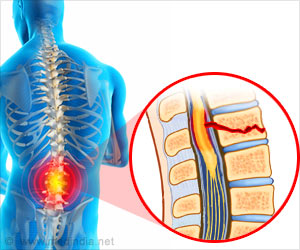
‘The new mechanism discovered helps improve functional recovery following spinal cord injury.’
Tweet it Now
Researchers at Karolinska Institutet in Sweden report in the scientific journal Cell that they have found an important mechanism that explains why this happens.Using this new knowledge, they were able to improve functional recovery following spinal cord injury in mice.
In many organs, damaged tissue can be repaired by generating new cells of the type that were lost. However, after an injury to the central nervous system, a special type of scar tissue is formed which inhibits this regeneration.
Injuries to the brain and spinal cord therefore often lead to permanent loss of functional ability.
It was recognized more than a century ago that nerve fibers of the central nervous system fail to grow through the scar tissue that forms at a lesion. However, this scar tissue is a complex mesh of different cell types and molecules, and it has been unclear exactly how the scar tissue blocks nerve fiber regrowth.
Advertisement
"Our findings give an important explanation as to why functional recovery is so limited following injury to the central nervous system," says Christian Göritz, Associate Professor at the Department of Cell and Molecular Biology and Lau fellow at Ming Wai Lau Centre for Reparative Medicine, Karolinska Institutet.
Advertisement
Inhibiting scar formation by these blood vessel-associated cells allowed some nerve fibers to grow through the injury and reconnect with other nerve cells. This resulted in improved functional recovery following spinal cord injury in mice.
"Further studies are now needed to explore whether this knowledge can be used to promote recovery following injury to the central nervous system in humans," says Christian Göritz.
Source-Eurekalert














